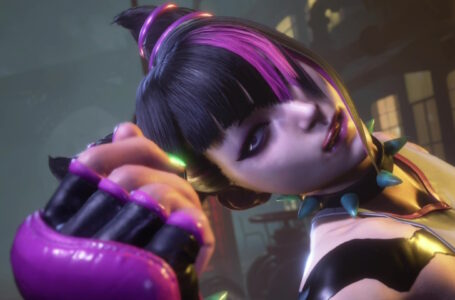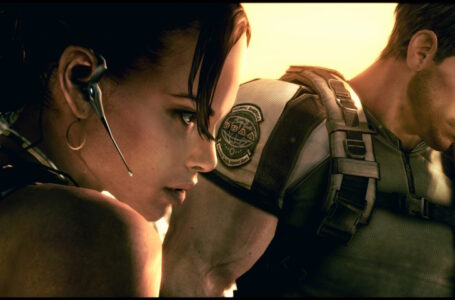Resident Evil Village: a lesson in tempering expectations
Resident Evil Village was one of the few triple-A games I was looking forward to this year.
Call it being spoiled on those lengthy visual novels and RPGs we all know and love here, but Resident Evil Village’s reportedly short run-time was the only factor I needed to wait for its price to decrease before finally picking it up a mere week ago.
Was it a worthwhile purchase at £40? As someone who is a sucker for steelbooks, it was hard to pass up nabbing it, but otherwise for the finer details, be sure to read on for my spoiler-free thoughts for a more substantial answer.
But for anyone already familiar with Resident Evil Village who has enjoyed the title, be prepared for a less than positive take on it.
Splendid characters brimming with untouched depths
The main focus and narrative motivation for our returning protagonist, Ethan Winters of Resident Evil 7, is saving his daughter, Rose, from the clutches of the Witch, Mother Miranda, who reins supreme in the titular Village. The overarching theme of familial love will hit you over the head during its runtime, as it is a defining reason for the majority of its cast’s motivations — both heroes and its villains.
It is even depicted in the gorgeously, fantastical gothic storybook of the opening segment. While this is most definitely a splendid cinematic that ties nicely to the overall theme of Village, the theme as a whole becomes painfully overbearing when it is often the only attribute to define its characters.

Worse yet, Resident Evil Village’s characters are never given enough depth to make us care or feel connected to with regards to their feelings and fates. While the motivation for Ethan is risking both life and limb for Rose’s safety, the concept of rescuing an innocent and vulnerable baby is an easy means of pulling at our heartstrings, making us immediately susceptible to feeling for those entangled in the situation — but it simply ultimately feels like a plot device.
If we take, for example, how The Last of Us showed us the dynamic of Joel and Sarah in just as much of a short time window, we witness how close they are and how much the pair care deeply for one another that connects us to them.
We are introduced to Rose with her immediately in our arms, and we are told to put her to bed as instructed by her mother, then we join Ethan’s wife Mia downstairs where it all kicks off as Chris ruins dinner. Village quite literally throws us into the action in no time, and while this will be to most players’ preference, it is at the cost of the all important sense of bonding with Rose. It ultimately feels appropriate to view her as nothing more or less than a convenient plot pusher as soon as the game begins.
This is just one example of my major complaint with Resident Evil Village. As someone who enjoys characters with a lot more dimension and depth, Village posed interesting and splendid designs in its diverse villains, each offering a different take on various horror genres. The traditional horror is depicted in the vampires, psychological horror with the dolls, body horror with Monreau, urban horror with Heisenberg, and the classic witch as its main villain. This group dynamic was extremely promising the first time we see them interact, setting up clashes of personalities and ideals at odds with one another. The only issue is that this is also the last time we see this.
Many players find it a major loss that we did not see enough depiction of Lady Dimitrescu’s and Heisenberg’s rocky relationship. It is one example of many issues I have when it comes to these characters in particular — not just exclusive to their unfortunate, limited interactions, but we simply only ever get the bare minimum sense of their own individual personalities.
These four “Lords” could have all been sympathetic and emotionally driven, yet we are shown little to no indication of their motivations prior to the dialogue during their boss fights. There is a certain amount of additional information when reading documents found later in Mother Miranda’s lair, but that’s not really enough.
As a quick run-down, Lady Dimitrescu cares deeply for her daughters, Angie suffers from a mental illness and seems incredibly lonely, Monreau craves affirmation and affection, Heisenberg wants freedom and control, and Mother Miranda’s own motivations are a mirror to Ethan’s very own. But the major issue with all of this is how little screen time each of them gets — whether it’s alone or together. As a result, we never really feel like we get to know them properly.
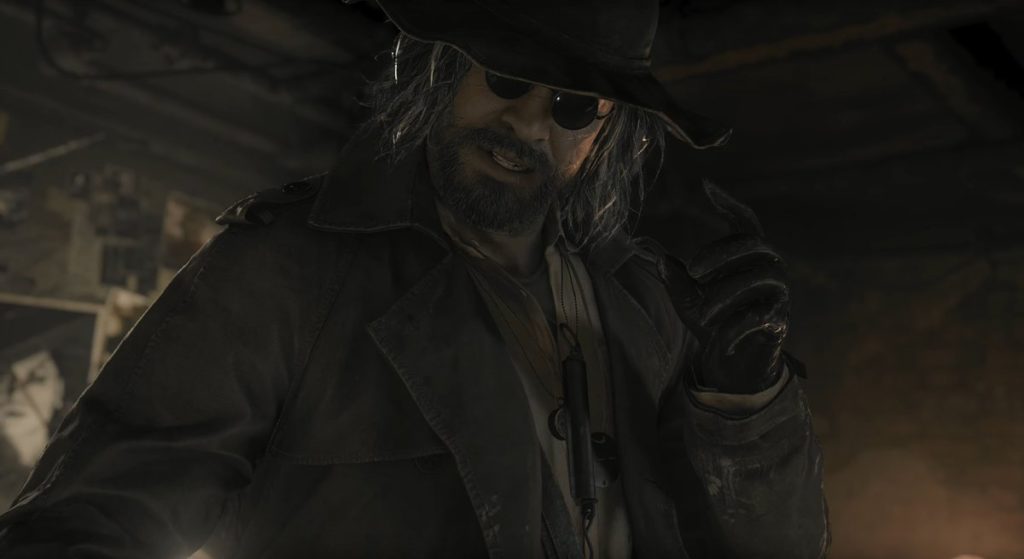
Do we feel for Lady Dimitrescu because we killed the supposedly precious daughters we barely saw communicate with her? Not really. Do we care that Monreau just wants Mother Miranda to show consideration and kindness to him when we saw none of this before his boss fight? Not as much as we could. Do I want to feel more sympathy towards them on a much deeper level? Of course I do. I want so much more from these characters; I want to fully feel their own struggles and goals! If only the game had the necessary runtime these interesting characters deserved to see them expanded on; it would have made for a much more effective emotional gutpunch on their exits.
While this will most certainly not be much of a concern to some players — nor was this shallowness much of an issue in previous Resident Evil games — Village houses villains that were clearly intended to be depicted as far more deep and complex than what we see elsewhere in the series. The potential for something even greater was hinted at, and I would have loved to see much more from these supposed monsters turned wicked by their own wishes, who still cling on to human desires and needs. It is, after all, a fantastic side to villainous characters. And when the groundwork has already been established, the missed opportunity feels even worse for the player.
Gameplay: The good, the bad, and the technical hiccups
Resident Evil Village attempts to marry its franchise’s two most favoured genres into this experience: action and survival horror. The village acts as a hub area, much like the safe rooms in previous installments did, but this time the explorable area of the Village expands the further you advance in the story.
Within these paths are optional bosses, wells that conceal more treasure items, lockpicks to use in different rooms for even more goodies, and livestock for stat improvements. There are so many activities to busy yourself with in this area alone, but it does come with a one glaring issue, and it is in its all-important sound design.
Older titles of the franchise effectively implemented musical tracks even during exploration of locations. Meanwhile, Resident Evil Village is often quiet, devoid of any OST accompanying the gameplay. It fails to capitalise on the heightened intensity of reaching unfamiliar, different rooms that greet the player with a sudden, ominous change of track.
The silence of certain rooms always forced a sense of foreboding as to potential scares hiding in its dark corners and unclear, murky areas. In fact, many memorable and effective elements of the older titles are omitted here in favour of presenting a game that attempts to mesh both horror and action together.
It’s not just the lacking sound design. Staples of the franchise, such as encountering unexpected hordes of enemies, avoiding said enemies due to limited supplies, tight corridors and locations that make the player decide on the best course of action — do you make a run for the safe room or gamble on spending more bullets to down enemies? — are all almost completely negated in Resident Evil Village.
On the upside, Resident Evil Village does feature skippable cutscenes, which Resident Evil 7 lacked. However, Resident Evil 7 did present a branching narrative path which encouraged at least a second play-through after experiencing the game the first time. Resident Evil Village instead simply expects you to play through multiple runs for its achievements and trophy unlocks, but its linearity both in level design and narrative makes this aspect much less appealing.
I experienced only one technical hiccup which seems highly uncommon — key item prompts were mislabelled on the map, such as a four winged key working on a six winged key door and vice versa.
One final design choice I could not help but notice is that while the gunplay is quick and varied with many available firearms according to your progress in the story, through all the carnage and destruction Ethan can stand next to a barrel or explosive and come out without any damage. He is not even knocked back from it. Talk about being built like a boulder. (Claire can take a point-blank grenade to the face in Resident Evil 2 remake with no ill effects, so I think we can call this a series staple at this point – Ed.) It took me out of the immersion on multiple occasions, and this was not helped by how much on-screen physical pain and beatings Ethan is put through in the cutscenes.
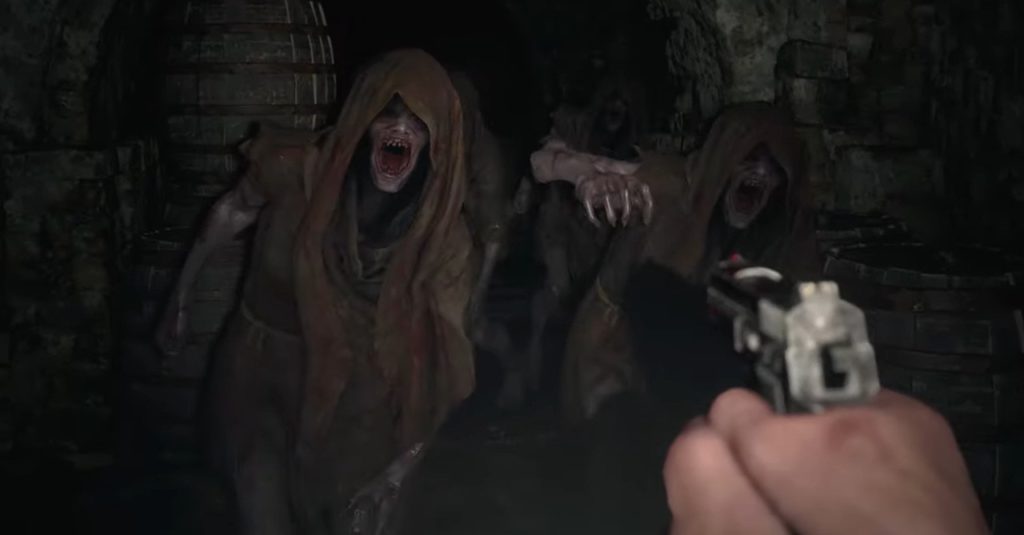
Your aim is not the only hit or miss
I will get straight to the point on this section — the level designs could have been so much better.
Lady Dimitrescu’s castle was not the labyrinth we were expecting, instead playing out as a straight line from door to door, with far too many shortcuts at each interval to make it feel like a castle.
While Angie’s level was overall more exciting and provided a memorable moment due to one exclusive monster in particular, it’s much too small. This is quickly forgivable once the psychological horror aspect kicks in, but the whole area drops in quality once more by providing a massive disappointment in its boss level design.
Monreau’s is easily the most forgettable however, with exploration being completely inconsequential due to its miniscule scope; it needed far more time to build his realm up. And while the boss stage made for some initially tricky timing with a sequence involving the traversal of platforms above unsafe water, the memory puzzle was yet another element that could have been implemented far better.
The catacombs, a location found in the lowest levels of Lady Dimitrescu’s castle, was the first indication of a Resident Evil level done right in Village. The location is cramped, with corners being tight and frequent, and providing plenty of opportunity for enemies to corner Ethan. This area was a godsend after the open landscape of the Village hub area and the upper levels of the castle, where even if Lady Dimitrescu’s daughters were to chase you, the short paths to different rooms made quick work at losing them.
And do not get me started on the slow sauntering of Lady Dimitrescu’s “pursuing”. Although I do love how she takes a moment to sort out her lovely hat if you hit her with a bullet; this was a nice attention to detail.
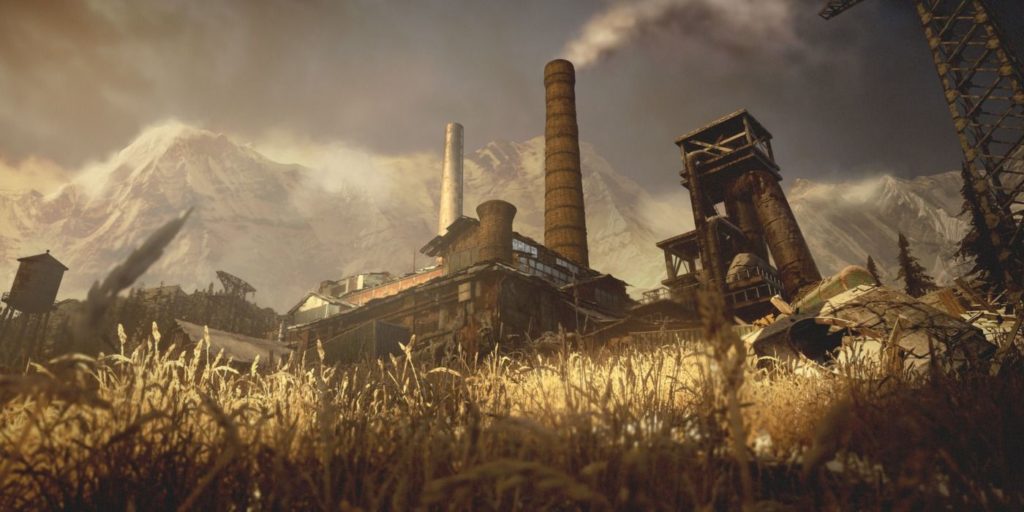
The best levels in Resident Evil Village are The Stronghold and Heisenberg’s Factory, since they play most similarly to older titles in the franchise.
The Stronghold offers the most hordes of enemies in one location, while actually providing puzzles that require quick action and clever solutions — even if they are mostly just levers to open a means of safely escaping. Meanwhile, Heisenberg’s Factory is the very best level of the game overall — though it seems to receive a wildly unnecessary amount of dislike from certain quarters of the fanbase. For me, the fact that the level actually provides the potential to get properly lost sounds more like a positive than a negative in the context of a horror game — but outside of this conceived fault of the level, it has so much more going for it, too.
There are multiple instances of dynamic combat and using the environment for your own gain, such as the mechanical wheels that can be used to block or hit enemies, and damaged doors that require sharp shooting or exact knife hits to open before a mini-boss slams you into the wall. These all make for the most engaging and high-stakes enemy encounters in the game. And let’s not forget how cramped this section is — once again, this feels the most faithful to the classic Resident Evil formula while still providing challenging gunplay, unlike the majority of its other levels.
Puzzling behaviour
While I have praised Resident Evil Village’s villains for what little personality and characterisation we were treated with, a lot is left to be desired in a few other characters. Namely, it was exciting to see the return of our recurring hunk of a man, Chris, who has never looked better (this may be one of many Hot Takes here). But his appearance made for some questionable narrative choices. While we expected his motivations would ultimately be for the greater good because Chris has been a protagonist on plenty of occasions in the past, his brain seemed to fry during Village this time around.
To be honest, Chris was once a personal future candidate for our Hump Day Husbandos column, but this game has made me reconsider my choices. The way in which he chooses not to disclose plot-critical details to Ethan simply to keep a certain element of mystery to his motivations is painful and shoddy storytelling. It also has no real pay-off, even if it is for shock factor, as the moments we do bump into Chris during the story see him protecting Ethan on a couple of occasions. At this point, this expected revelation is too obvious to be played out in any kind of surprising manner.
Yet another nagging thought during the playthrough concerns Chris’ supposed involvement in the plot alongside his BSAA team. By the time Ethan has taken down three of the Lords and we run into Chris again, many players will quite rightly wonder what he has been doing that whole time. Admiring the scenery? Which, yes, I cannot blame him for doing so, as the landscapes of Village are truly exquisite.
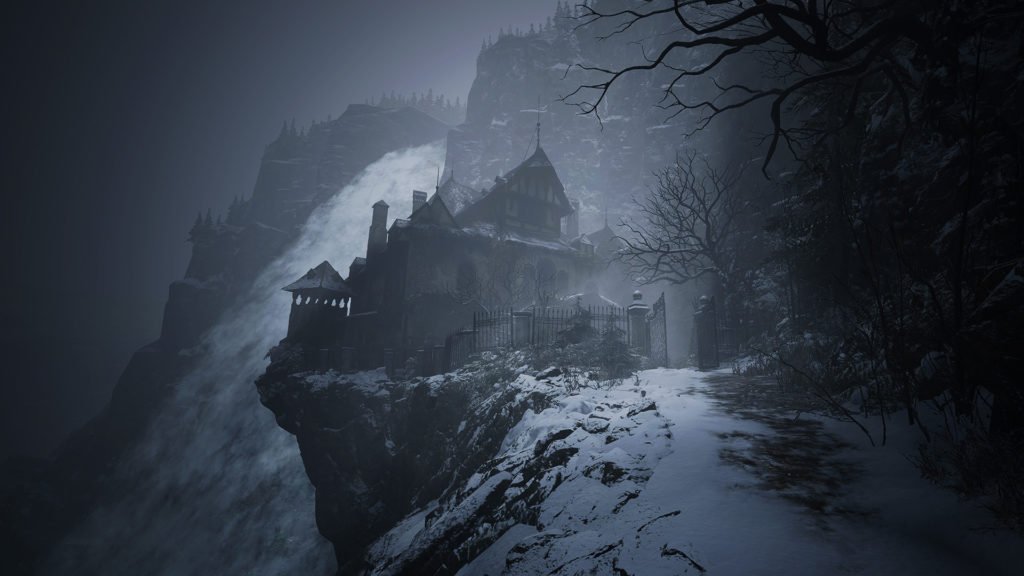
On the topic of puzzling, the puzzles we could historically expect from the Resident Evil IP may as well have been ignored entirely in Resident Evil Village; this is another area where it would have been great to see more time spent on building up any level of difficulty — even the bare minimum would have been appreciated. The majority of them are simply solved by rotating the item in question, while the only moderately head-scratching moment during a puzzle involves obtaining Lady Dimitrescu’s treasure if you do not take note of the hanging fire torches — or maybe that was just me.
The most exciting puzzle comes in the form of a sequence where you need to track down some hidden bells in Lady Dimitrescu’s area. It was satisfying to find these different shaped bells placed in imaginative nooks and crannies — we needed more puzzles like this.
Possibly the most insulting puzzle comes in the form of a sequence involving a piano; one which has rubbed many players the wrong way for its simplicity and overly forgiving nature. Players can randomly select any note without any reproductions until the tune plays, making the puzzle entirely inconsequential and poorly developed.
Backtracking to open new areas and shortcuts was a crucial part of past Resident Evil games… one which happens to be non-existent in Resident Evil Village however. The only time any backtracking was necessary in my own playthrough was in retrieving Lady Dimitrescu’s treasure. The majority of the time, needed items are freely obtained when and where you need them. Coming up to an exit after a run in with a mini-boss? Congratulations, take this key item you need within a few more steps, then backtrack into the room you just came from to use said item to advance into the next path.
Any player urgency is squandered by the game’s preference for linearity and its small scope. So not only did Resident Evil Village’s characters deserve much more time to be developed, so did its levels.
Questionable difficulty
The entire runtime of this meandering is not helped by the initial village encounter that proves to be the only intense and truly difficult section — despite acting as a tutorial. The setup was superbly done, with roaring, raging wolfmen relentlessly pursuing Ethan. Players are expected to barricade themselves in rooms to bide for time — a mechanic we never see again in the game after this initial sequence. With the initial small amount of ammo at this stage, the feeling of isolation and hopelessness in this situation made for an engaging and exciting first step into the Village.
The only problem is that the game loses this momentum immediately thereafter. We never get to experience such a moment with this amount of tension and dread again within the game after this incredible opening level — but the worst is yet to come.
The gameplay of Resident Evil Village is on the easier side overall — the inventory space is far too big and forgiving, and materials and money can be accumulated at a surprisingly fast rate by downing every single enemy you come across and locating as many sellable items as possible. This ultimately makes the whole “survival” side of Village feel completely neutered.
In fact, you may even find yourself wanting to avoid the Duke because his services are so helpful that they have the potential to dampen the overall “survival horror” experience of the title. No more worrying about what key items you should keep on you, and no more issues with enemy encounters when you can beef up your HP by cooking up a meal to eat with the Duke. The optional benefits, in this case, I would highly suggest avoiding completely if you want some more satisfying, challenging gameplay.
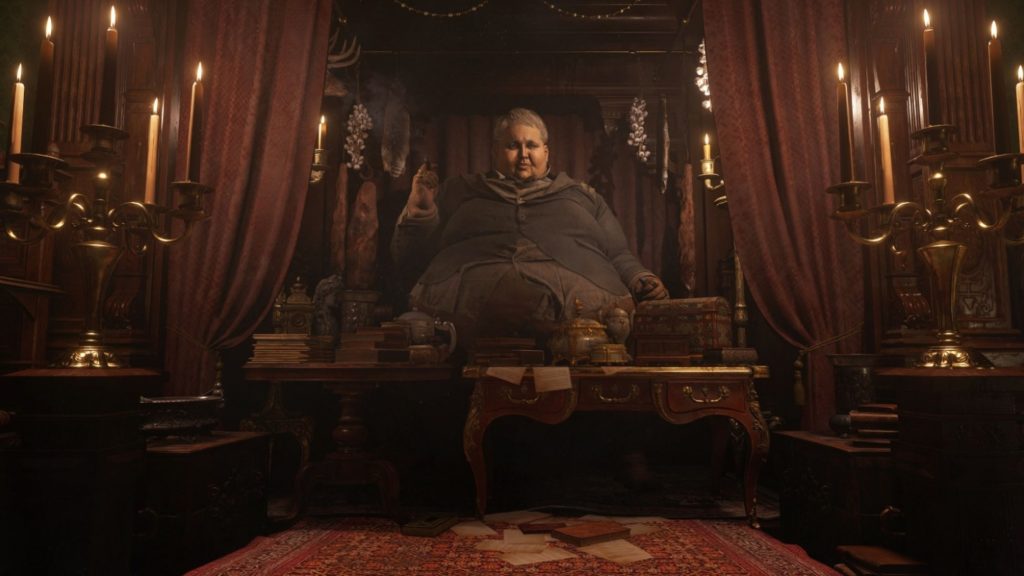
And this is coming from a playthrough of Hard mode, whereby the only challenge in the gameplay for me came with the final boss — due to having an overabundance of nothing but sniper ammo in my inventory. For a close quarters boss battle such as this one, it sure did make for an unintentional struggle at the last hurdle — though I was actually thankful for this after breezing through the previous levels.
As endearingly messy as Resident Evil continues to be
With how many years Resident Evil has been adding on to its convoluted lore and plotlines, it is no wonder how the narrative can become a bit… jarring at times. The main story issue of Resident Evil Village comes from its storytelling not being subtle enough — when there are seemingly no permanent consequences even to some of the most violent parts of the game, the sense of mystery starts to wane quite a bit.
A certain revelation was the only time I was surprised during my time with Resident Evil Village, considering the many memorable reveals of its predecessor. But its inconsistencies with the prior game are disappointing — even if they can always be explained and rectified DLC and a sequel.
On the other hand, the genuinely surprising connection to Resident Evil 2 specifically was a brilliant idea, and it even links two of its characters who have otherwise not been depicted together before during the game.
Level and character designs
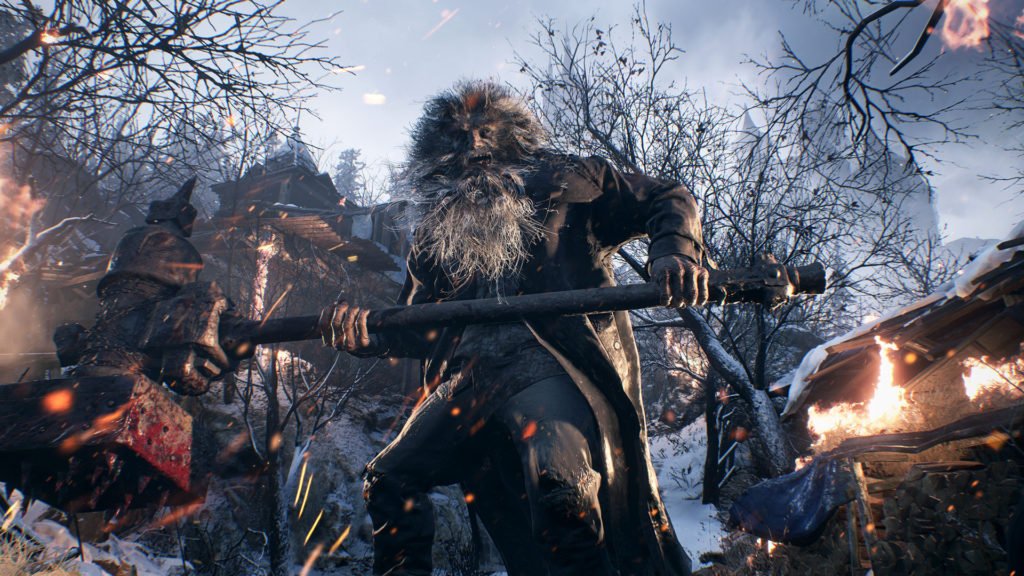
The variety of monster types was also another exciting prospect I had initially commented on back in my pre-release thoughts. While the majority are reskins of the same monsters, the variety is noticeable and appreciated. My main nitpick is the inclusion of a flying enemy known as Samca. They pose almost no danger, and are exceptionally easy to avoid overall.
Meanwhile, within the confinements of Heisenberg’s Factory, the very best enemies Resident Evil Village has to offer lie in wait. The speedy and grotesque-looking mechanical nightmares that are the Soldat Zwei and Soldat Panzer are creative, well-implemented and challenging.
But major props go to the stage’s mini-boss, Strum. Thanks in part to the destructible environment in the initial labyrinth section and the design and behaviour of Strum, this small section makes for the most memorable mini-boss encounter in the game’s best level.
Otherwise, the majority of the mini-bosses are mostly disappointing. While Urias, found in The Stronghold, also uses the environment to make for yet another brilliant example of a tense and horrifying battle for your life in a dark and cramped setting, it’s less effective when it’s reused in a very similar form during the Urias Strajer encounter later on. However, the very worst victims of this mini-boss mistreatment are Lady Dimitrescu’s daughters.
Things start well in the fight with Cassandra, requiring you to blow up part of the wall in order to allow sunlight through and confine her movements around the small room she is in. But this creativity is all thrown out of said hole in the wall when it comes to the youngest daughter, Daniela; she is held within a circular room with plenty of leg room to completely avoid her, and she can be defeated by simple lever pulling to open up the sunlight panel above and give her a quick finish.
My dear girls, they never did give you the time of day you deserve… though I guess they did thanks to their early exit from sunlight exposure, heh.
And do not get me started on how Lady Dimitrescu was handled. Despite her being used as a clear push for marketing purposes multiple times before the game’s release, she is barely seen unless you’re spending far too long in the castle than needed just to keep seeing glimpses of her. If that’s your thing.
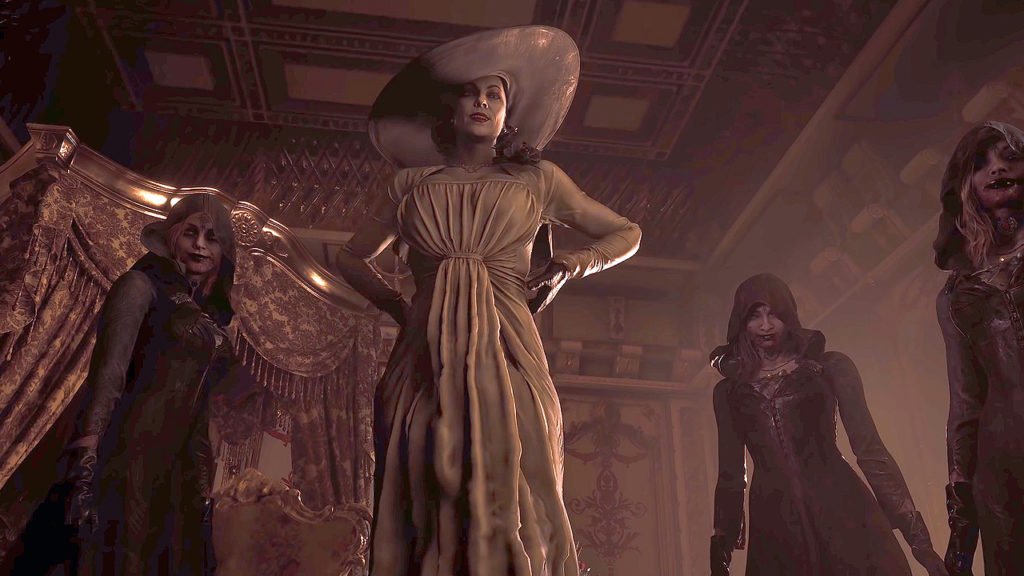
Now we finally come to Angie, the previously mentioned hide-and-seek boss. While her boss battle is quite disappointing due to its structure, it does nicely represent Angie’s character — she does not harm Ethan, hides herself in the shadows, and merely wants companionship, albeit sounding far too desperate and unfriendly for us to ever want to help or approach her.
Angie is a major character I would have loved to see more of because of how much potential depth that could have been explored through her story, and while the boss level is somewhat basic, it makes sense for who Angie is.
This level also holds one of the most horrifying sequences within the franchise, making for a massive saving grace. The barely crawling and screeching foetus is sheer nightmare fuel. While the game quickly reinforces that this encounter will not be anything but a “hide in a locker or under the bed and avoid the enemy” format to survive, its design, animation and the way in which it kills Ethan if you happen to fail will linger in your mind for the rest of your life.
To close this section off, I wanted to dedicate a paragraph to its polarising protagonist. I was initially impressed with the personification of Ethan in Resident Evil Village, especially so during the events of the demo when meeting residents of the area.
When disaster strikes, Ethan is vocal in his emotional anguish and turmoil regarding the current situation, making for a much more realistic reaction as the player character. This is, however, rather at odds with the game’s throwback humour, when Ethan starts spouting the same kind of corny remarks Leon did in Resident Evil 4. Most of the time this come across as awkwardly sassy towards the bosses especially, which is a jarring contrast to his supposed emotional turmoil as he seeks Rose.
Possibly the best usage of this is, unsurprisingly, with Heisenberg — he is simply the best creation to come out of Resident Evil Village, character- and level-wise after all. When Ethan chooses not to partner up with him to defeat Mother Miranda, it results in Heisenberg pushing Ethan into the Factory, with an utterance of “your funeral”. And on Heisenberg’s defeat, Ethan utters the same line back to him. How awesomely corny.
This same scene also holds the best fanservice line in the game with its reference to Chris as a “boulder-punching asshole”. What a time to be alive.
Conclusion
Despite my many criticisms of Resident Evil Village, I still enjoyed my time with it. Its satisfying gunplay, intriguing villains who deserved far more screentime, and amount of both challenging and humorous achievements mean I’ll likely make another run through on its hardest difficulty, Village of Shadows.
But my past anticipation for its release may have hindered my overall enjoyment of the title. For what it is worth, I hope the pitfalls of what I covered here is enough of a warning to anyone still debating on paying for the title around its current full price. It is a short game, clocking in at around 8 hours for one playthrough, and with an achievement for finishing the game in less than 3 hours, this would seem to be an obviously negative pointer to the product’s long-term value, if you ask me.
I will go so far as to say that I regard its £50 price tag as too expensive for what you get — but for those who still see it otherwise, more power to you, especially if you also fall victim to steelbooks like I do.
Resident Evil Village seems to have attempted to appease the many wants of its fans’ differing preferences, such as those who wished for less horror compared to Resident Evil 7, and those who wanted just as much action. The price it paid for this attempt to appeal to everyone feels apparent to me in all the areas it faltered on — when attempting to bring so many elements together as a single package it didn’t do any of them as well as it could have.
And yet it still has gone down favourably for the majority of its players and critics alike since its launch, and I freely admit I’m in the minority here — so if you are part of that majority positive reception, then good for you.
Maybe on another playthrough my perception of the title will improve. As of now, it simply did not reach the heights I had unfortunately associated it with through blind excitement. And that is completely and ultimately on me.
Join The Discussion
Rice Digital Discord
Rice Digital Twitter
Rice Digital Facebook
Or write us a letter for the Rice Digital Friday Letters Page by clicking here!
Disclosure: Some links in this article may be affiliate links, which means we may earn a small commission if you make a purchase after clicking on them. This is at no additional cost to you and helps support Rice Digital!
- Sigh of the Abyss: Shadow Bonds – Prologue Review - October 7, 2023
- Is She The Wolf? is wickedly addicting TV - October 6, 2023
- The steady consumption of Slow Damage - October 5, 2023





